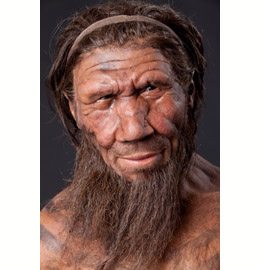Scientists at the University of Washington’s Department of Genome Sciences, report that they can zero in on remnant Neanderthal DNA in modern humans.
They have identified specific regions in our genome where that ancient DNA resides, and they can do this even without access to actual Neanderthal DNA samples from fossilized bones.
 Neanderthal Traits
Neanderthal Traits
The study published this week in Science promises to help researchers working not just in addressing questions about human evolution, but those investigating the underpinnings of human traits and complex diseases.
Up to this point, scientists using tools – like the one developed by 23andMe – could make estimates about the amount of overall Neanderthal DNA in modern humans, but this new technique could help researchers bore down on where in the genome that DNA resides.
That could give us greater insight into how the Neanderthals DNA changed modern humans, including what sort of traits and conditions they conferred onto Homo sapiens.
Evolutionary Success
There are many theories regarding the influence Neanderthal DNA had on modern humans. Some have pointed to Neanderthal DNA as a culprit in certain cancers, in autism and diabetes. But it is also likely that modern humans benefited from interbreeding and that Neanderthal DNA may have played a large role in our evolutionary success.
Over the last few years, we’ve learned that most non-Africans carry some remnant Neanderthal DNA. But what that might mean – what characteristics, diseases or conditions that we modern humans carry with us because of that DNA – is still unclear.
Neanderthal Sequence
Just last month researchers from the Max Planck Institute for Evolutionary Anthropology sequenced the full genome of a Neanderthal woman. They did this by extracting DNA from her 50,000-year-old fossilized toe bone found at a site in Siberia. The sequence was done at a quality comparable to what would be done for a living person. And the researchers were able to use the sequence to show how genes flowed between these populations.
This and other breakthroughs have only increased the pace of our changing understanding of early human evolution. As we learn more, our curiosity about those early cousins only seems to grow.
Take a look at these new illustrations of Neanderthals done for an exhibit called Britain. It’s called One Million Years of Human History and was put together by the National History Museum in the UK.
![]()
Got Neanderthal DNA?
23andMe customers can find their inner Neanderthal or at least how much Neanderthal DNA they have. Not yet a customer? Visit our store!


